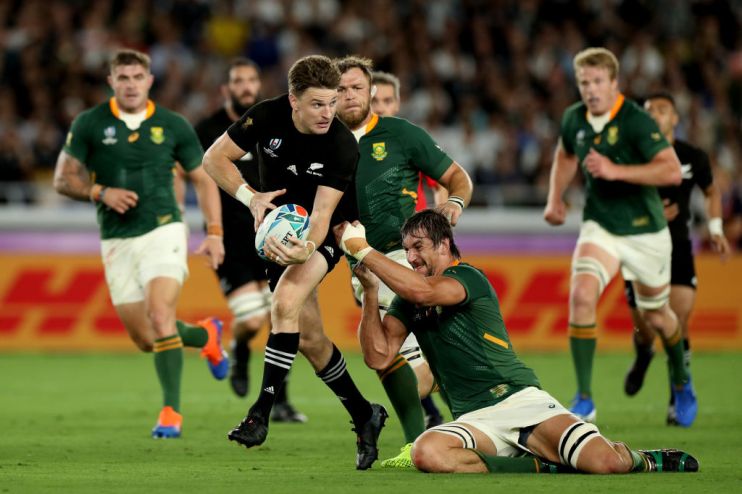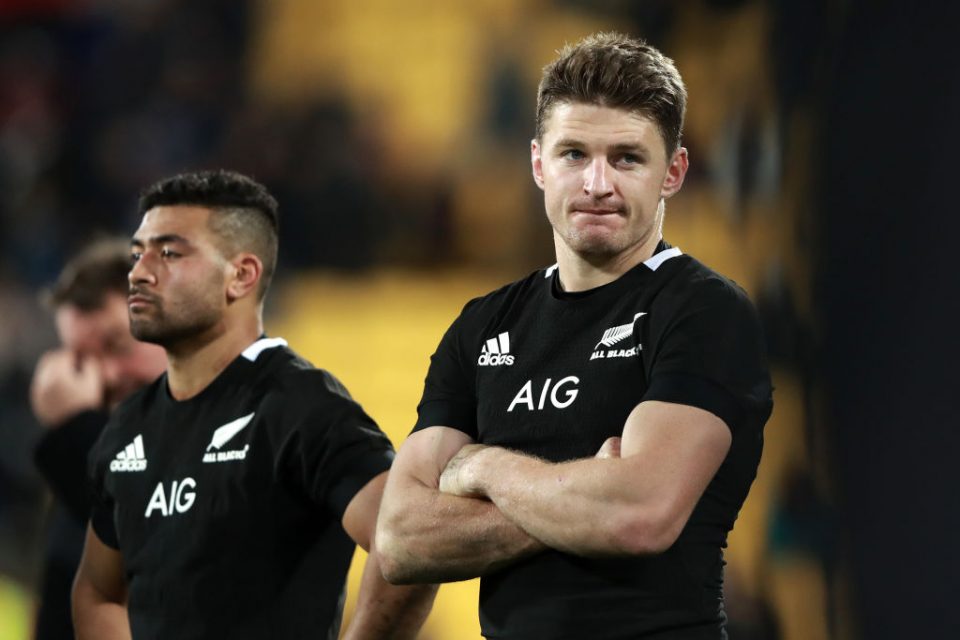Innovative All Blacks are playing a new ball game with Barrett and Mo’unga on the field

When Ireland beat New Zealand on a historic night in Dublin just short of a year ago, they looked like being the team to beat at this year’s Rugby World Cup.
How quickly things change in sport.
On Saturday the pair go head to head in the World Cup quarter-final and it is Ireland who are once again huge underdogs, having allowed themselves to drift back towards mediocrity this year.
Standing still, however, is not in the All Blacks’ DNA.
Read more: England v Australia: Hooper and Pocock can benefit at breakdown with Jerome Garces as referee
To the general observer this New Zealand side may have seemed as vulnerable as any in the past decade coming into the tournament, having lost to Australia and South Africa as well as Ireland in the past 13 months.
Their six defeats in this World Cup cycle amounted to twice as many as they suffered between 2011 and 2015.
Reinvention
But once again they appear to have reinvented themselves and taken the unstructured rugby they pride themselves upon to another level.
Beauden Barrett is widely deemed to be the best fly-half – if not simply the best player – in the world, but Kiwi head coach Steve Hansen has had other ideas in mind for his talisman.
Deploying him at full-back, a position where he also excels thanks to his all-round ability, has freed up the No10 jersey for Richie Mo’unga and allows the All Blacks to play with two of the best distributors in the game, albeit at the expense of Ben Smith.

The transition, which has also seen a new-look back row implemented with Sam Crane and Ardie Savea either side of captain Kieran Read, has not been plain sailing. A 16-16 draw with South Africa and 47-26 defeat to the Wallabies during the summer are testament to that.
But the new combinations have begun to bear fruit and an opening pool-stage victory over South Africa was an early reward for Hansen’s patience in allowing these players to flourish.
It is, of course, not enough. Anything less than retaining the Webb Ellis Cup come 2 November will be considered a failure. But the All Blacks appear to have rediscovered their winning formula at the right time.
Deadly combination
Integral to that is the new 10-15 axis between Mo’unga and Barrett who now look to be playing in sync with one another and improving every game.
The pair combined to devastating effect against the Springboks as New Zealand raced into a 17-3 lead with two tries in three minutes during the first half.

Their ability to interchange between first and second receiver and arc runs around one another, with heavy forwards also running off them, makes anticipating where the ball will go increasingly difficult, causing defenders to hesitate and in turn open up more space.
The deeper structure to their attack allows them to play a more expansive, unpredictable game and moving Barrett into second or indeed first receiver from full-back means there is nearly always an expert kicker available with more space and time to find a pass from the boot.
Both tries against South Africa involved Mo’unga kicking out wide to Sevu Reece as the All Blacks worked their way into the opposition’s half.
The No10 then linked up with fellow playmaker Barrett, whose burst of pace and off-load to George Bridge assisted the first try. Minutes later he was heavily involved as first receiver in the phases leading up to brother Scott Barrett’s try.
In truth, New Zealand have not been tested since. Comfortable 63-0 and 71-9 victories over Canada and Namibia respectively gave them a chance to practise combinations but the cancellation of their final pool stage match with Italy due to Typhoon Hagibis means there is a slim possibility they come into the weekend undercooked.
And yet, it will take something special to stop this improving and innovative All Black machine from completing another successful title defence.